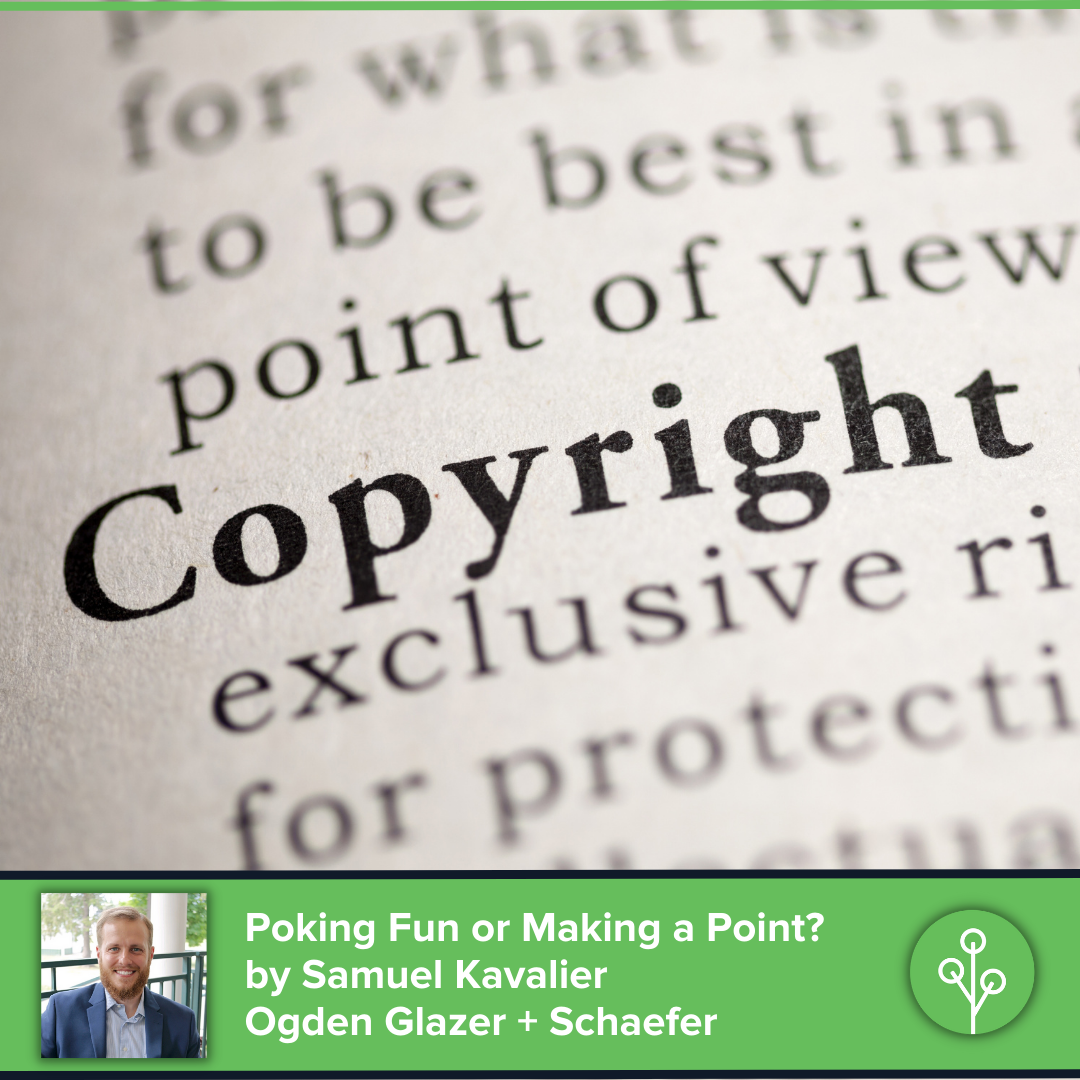Today’s post revisits something discussed several years ago on this blog: fair use. If you are looking for background or further reading, check out Erin’s posts here, here, and here, as well as Collin’s post here. As a quick TL;DR to those previous posts, fair use is a defense to copyright infringement claims for a use of a copyrighted work that would otherwise be considered infringement. Courts use a four-factor test to determine whether fair use applies on a case-by-case basis.
However, as courts have handed down decisions through the years, there are certain types of uses that are treated more favorably under fair use than others. One example is parody vs. satire. Parody is using an original work of another to create a new work that pokes fun at the artist or the original work. The most famous fair use parody case involved the music company that owned the rights to Roy Orbison’s Oh, Pretty Woman suing the members and record company of 2 Live Crew, a rap group whose song Pretty Woman borrowed the familiar bass riff and “pretty woman” refrain from the Orbison original. In its 1994 opinion, the U.S. Supreme Court ruled that 2 Live Crew’s Pretty Woman was a fair use of the original. The Court reasoned that 1) criticism is one of fair use’s stated purposes under the Copyright Act; (2) parody naturally requires copying at least some of the original work to level criticism; and (3) the criticism might harm the market for the original, but the only relevant harm is if the parody replaces the original in the market.
By contrast, courts seem less sympathetic to satire. Rather than using the original work to make fun of the work or its creator, the original work is used to criticize something else. The Sconnie Nation case Erin discusses in her post emphasizes this point well. The photo in question was used to critique the politics of the subject of the photo, not the photo or the photographer. The 7th Circuit seemed unpersuaded by the fair use factors generally, and the saving grace for Sconnie Nation was that the image on the satirical t-shirt did not borrow enough from the original photo to qualify as infringement.
If you are still reading so far, you may be thinking, “So if the funny thing I make copies from an original work, is a parody, and is not a satire, I’m good, right?” Not so fast! First, a judge determines if fair use applies on a case-by-case basis. It is not your own artistic opinion legally to decide what parody and satire are. If the judge thinks your work is satire, there’s tougher sledding ahead for you. Second, parody is not an end around the four-factor test. If your parody stands up poorly to that test, you’re still in trouble. Third, court isn’t cheap, so it’s fair to ask if your parody is worth the time and money of a legal battle.
Ultimately, the safest way forward is to ask for permission from the owner of the original. In fact, Weird Al Yankovic, the most famous parodist of our time, asks for permission from the owner of the original work before making each of his parodies, both to hedge against legal issues, as well as maintain good relationships within the music industry. What’s more, he has backed away from making several parodies for which he did not have permission. We’ll just have to wonder what might have been with the parody of “Lose Yourself.”
Thanks for reading!

